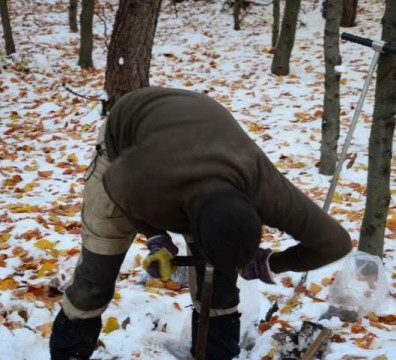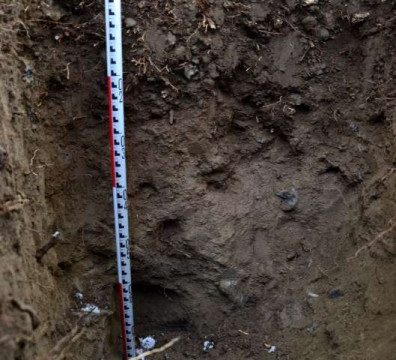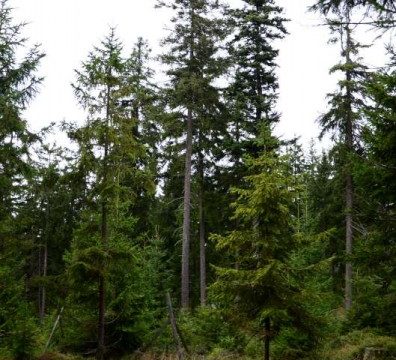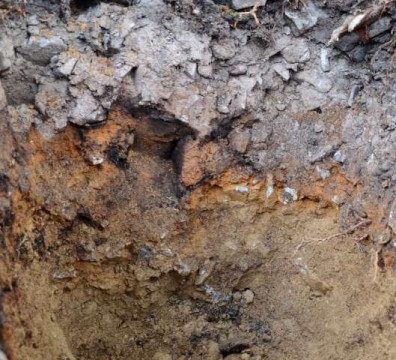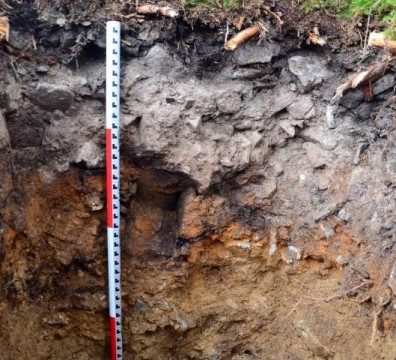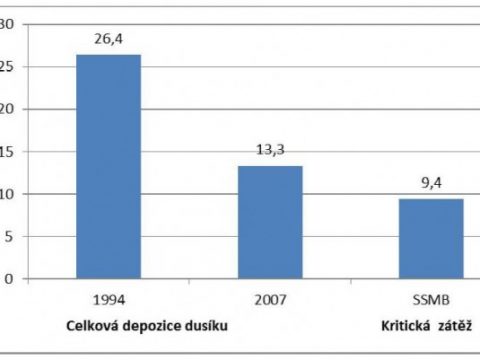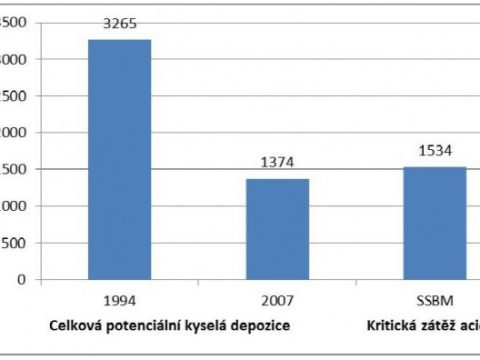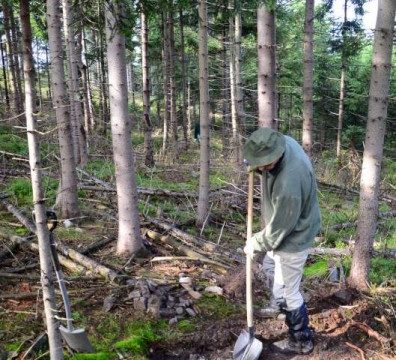This is the NAAR’s project No. QI112A168 entitled “Forest soils as a determining factor for the forest health, biodiversity and the for forest production as well as for non-productive functions of the forest” with its implementation period from 2011 to 2014.
Involved in the project were experts from the Forestry and Game Management Research Institute, the Czech Geological Survey, the Czech Hydrometeorological Institute and the Ekotoxa Company and the Military Forests and Farms, a State Enterprise.
The aim of the project was to bring up practically applicable results for forestry in the Czech Republic – map outputs including updates of critical loads, the evaluation of empirical loads based on the evaluation of vegetation relevés and other parameters, the requisite methodology for the assessment of ground vegetation, comparing the current state of the forest soils with the assumptions of the typological system and more.
THE MAIN FINDINGS INCLUDE:
Changes to the chemical properties of forest soils
- The results show the predominance of strongly acidic and moderately acidic soils.
- The supply of nitrogen in the forest soils (ecosystems) is good, while in relation to the expected deficit of this element in the past it may be considered as being elevated.
- The lower C/N ratio in the humus layer suggests the near saturation of the ecosystems with nitrogen.
- The supply of accessible cations in the forest soils ranges from very low to critical. Probably this is most serious in regard to calcium, the contents of which in most areas are below the critical shortage level and its total supply (and therefore also the possibility of its supplementation by means of weathering) is also very low.
- Very low too is the accessible content of potassium and magnesium. In regard to magnesium, in some areas its deficiency symptoms are also observed in the assimilation organs of forest trees, or are associated with the disruption of the health status of the forests, that require measures in the form of the chemical improvement of the forest soils to be taken.
- The saturation of the sorption complex with bases corresponds to the foregoing and at a number of the sites it is very low.
- Based on these findings the risk may specifically be related to the decisions that are in preparation based of the current typological system and using the “anticipated” properties of forest soils, which do not match reality. As a typical example it is possible to mention, for example, the use of forest residues for energy purposes or the planting of fast-growing trees without the adding of nutrients to the forest soil as a means of compensatory fertilisation.
The increasing representation of the nitrophilous species
Another finding is the fact that at several dozens regularly monitored areas during the past 17 years an increase occurred in the representation of the nitrophilous species, and that these findings also correspond with the increase in the volume of the concentration of nitrogen in the forest soils.
From amongst the tree species it is elderberry (Sambucus nigra), from amongst the herbs, for example, blackberry (Rubus fruticosus agg.), together with Urtica dioica, Geranium robertianum, Impatiens parviflora, Alliaria petiolata and Galium aparine. In some areas there is an onset of glade species that, in young-age classes and in the cleared stands, often spread intensively. Also reported has been the onset of a number of invasive alien species. These include, for example, Asian Impatiens glandulifera and an American glade species Erechtites hieraciifolia.
Most susceptible to these changes are especially those areas with a non-native species composition and with a herb layer as a change, compared to the natural vegetation. Regarding the vegetation and the forest types, the nutrient habitats (of nutrient or of enriched series) are subject to the greatest changes, while the acidophilic communities (the acidic series) appear to be more stable. Minimal changes were monitored in those pine oak forests with a predominance of blueberries (Vaccinium myrtillus).
The deposition of sulphur, nitrogen and total acidity
Depositions were modelled in accordance with the UNECE methodology (UBA, 2004).
- Between the years 1994 and 2007 the total deposition of nitrogen (NOy + NHx) decreased on average by 49%.
- The largest decline in the total potential acid deposition between the years 1994 and 2007 occurred in the most polluted regions of northern Bohemia. Between the years 1994 and 2007 the total potential acid deposition dropped by 58%.
- The deposition flow of sulphur shows a statistically significant decreasing trend at all of the CHMI stations. In many areas nitrogen remains a significant and important stress factor. A deposition flow of nitrogen that exceeds the value of 1 g.m-2.year-1 (a critical value for Central Europe’s coniferous forests) is achieved in the larger part of the Czech Republic.
- The deposition that occurs from horizontal precipitation contributes significantly to the real deposition. Up till now it had generally been neglected; we were so far able to quantify it indicatively for sulphur, while a similar quantification for nitrogen is very difficult due to the fact that nitrogen, unlike sulphur, is a substance that is affected by the significant exchanges that take place between vegetation and the atmospheric conditions.
- The current methodology for calculating the deposition of nitrogen that is utilised by the CHMI undervalues the real deposition, because it does not take into account all of the factors that may have contributed to the deposition. Simply because data regarding these factors are not available, however, they are not measured.
Critical load
Critical loads of sulphur CLmax(S) in the monitored areas range across a wide scope of values, from 186 eq ha-1.year-1 (Všeteč) to 2524 ha-1.year-1 (Lazy). Atmospheric deposition of sulphur is exceeded at 4 sites (Mísečky, Všeteč, Lásenice and Luisino Valley). At the Mísečky and the Lásenice sites nitrogen is also a contributory factor in regard to the acidification of the forest ecosystem.
Published results – a list for download (PDF, 35 kB); the status as of January 2015.
The edited final report on the project (PDF, 171 kB, Czech language only).

